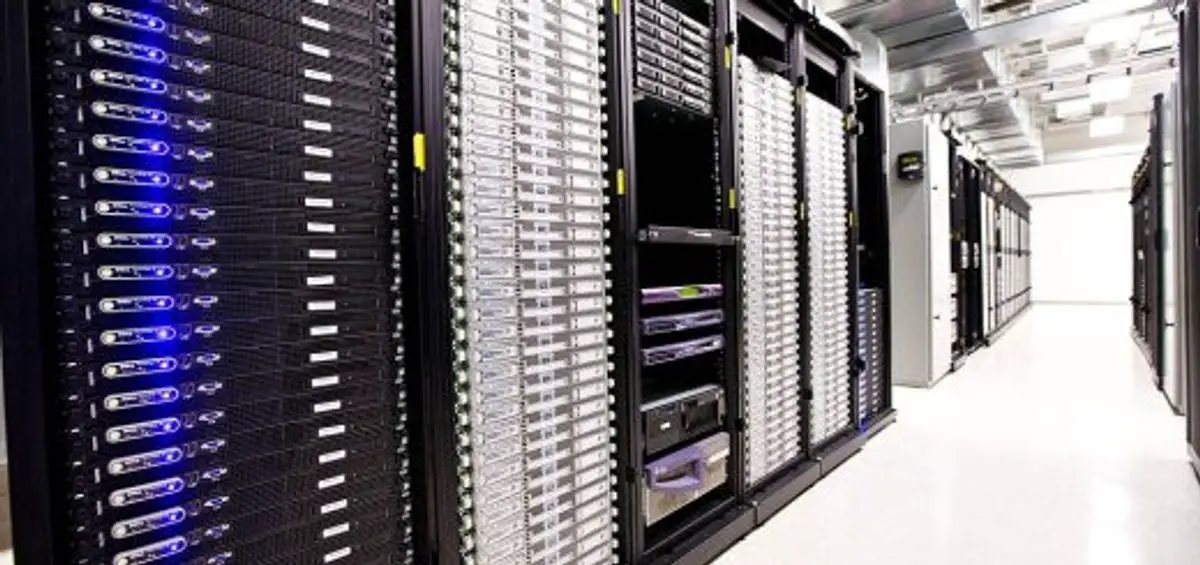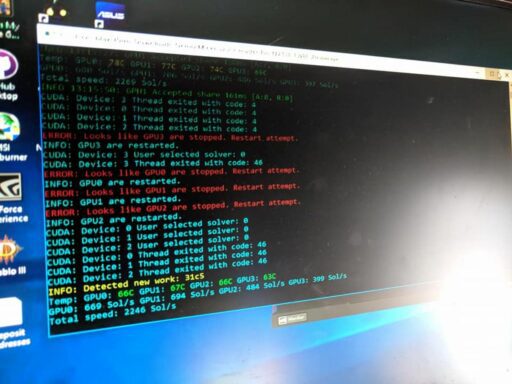In the rapidly evolving world of cryptocurrency, cloud crypto mining emerges as a transformative force, reshaping the landscape of digital currency creation. This article, ‘Harnessing the Skies: The Future of Cloud Crypto Mining,’ delves into the innovative and sustainable practices that are defining the next generation of mining. From Jack Dorsey’s vision of decentralization to the integration of AI and Web3 technologies, we explore the economic impacts, regulatory considerations, and technological advancements that are driving the future of cloud crypto mining.
Key Takeaways
- Decentralization, championed by figures like Jack Dorsey, is becoming a pivotal aspect of crypto mining, providing a solution to centralization and regulatory issues.
- Sustainable mining practices, particularly the use of solar power, are becoming increasingly important in reducing the environmental impact of crypto mining operations.
- The integration of AI and Web3 is spurring the development of innovative cloud mining solutions, creating new opportunities in fields like the Metaverse.
- Crypto mining is facing significant economic shifts, with a potential market boom to $3.3 trillion and the evolution of mining stocks and hardware in anticipation of Bitcoin’s halving event.
- Regulatory landscapes are transforming the crypto mining industry, with the White House’s energy consumption stance, tax implications of the Ethereum Merge, and state-level actions like New York’s mining ban.
Decentralization and Sustainability: The New Era of Crypto Mining


Jack Dorsey’s Vision for Decentralized Bitcoin Mining
In the pursuit of a more equitable and secure Bitcoin network, Jack Dorsey has thrown his support behind initiatives like OCEAN, which aim to shift the balance of power away from large mining pools. This move towards decentralization is not just a philosophical stance but a strategic one, designed to safeguard the integrity of Bitcoin by distributing its mining operations more broadly.
The goal is clear: to prevent the concentration of mining power and ensure that Bitcoin remains as decentralized as possible.
Dorsey’s involvement signals a growing trend where influential figures are advocating for a decentralized mining ecosystem. The launch of OCEAN mining, which successfully closed a funding round led by Dorsey, is a testament to the viability of these decentralized models. As the industry prepares for the upcoming Bitcoin halving, the race for new, more efficient mining hardware intensifies, underscoring the need for a mining process that is not only decentralized but also sustainable and efficient.
The Role of Solar Power in Sustainable Mining Practices
The integration of solar power into cryptocurrency mining operations is not just a trend; it’s a strategic move towards sustainability and cost-efficiency. Solar energy is increasingly becoming the backbone of eco-friendly mining solutions, reducing the carbon footprint associated with the digital currency ecosystem.
- Solar panels provide a renewable source of energy, mitigating the environmental concerns of traditional mining.
- Mining operations can achieve greater independence from the grid, enhancing stability and reducing operational costs.
- Excess solar energy can be stored or redirected, further optimizing the energy consumption of mining facilities.
The symbiosis between solar power and crypto mining is paving the way for a greener and more sustainable future in the industry.
The economic incentives are clear, as solar power offers a path to lower electricity costs, which are a significant factor in mining profitability. With the right infrastructure, solar-powered mining could become the standard, setting a precedent for responsible energy use in the tech sector.
Decentralization as a Response to Regulatory Challenges
In the face of increasing regulatory scrutiny, the crypto mining industry is pivoting towards decentralization as a strategic response. Decentralization offers a buffer against the legal ambiguities and regional restrictions that can stifle innovation and restrict access to mining activities. By distributing the mining process across a global network, miners can mitigate the risks associated with centralized operations and regulatory bottlenecks.
The shift towards decentralized mining networks is not just a technical maneuver but a fundamental rethinking of how crypto mining infrastructure can be resilient in an unpredictable regulatory environment.
The following points highlight the advantages of decentralization in addressing regulatory challenges:
- Resilience to localized regulatory changes: Decentralized networks are less vulnerable to the impact of regulations in any single jurisdiction.
- Enhanced privacy and security: A distributed network reduces the risk of data breaches and enhances user privacy.
- Global participation: Decentralization allows for a more inclusive ecosystem, enabling individuals from various regions to participate in mining.
While decentralization presents a promising avenue, it is not without its challenges. The industry must navigate the complexities of global compliance and foster a cooperative relationship with regulators to ensure a stable and prosperous future for cloud crypto mining.
Innovative Cloud Mining Solutions in the Age of AI and Web3


Top Decentralized Cloud Projects Pioneering AI Integration
The intersection of decentralized cloud computing and artificial intelligence is spawning a new generation of projects that are reshaping the landscape of crypto mining. Nuco.cloud stands out as a leader in this space, offering a decentralized mesh hyperscaler that democratizes access to computing power. This innovative approach allows users to harness resources from a global network of servers, breaking free from the constraints of traditional cloud services.
- Nuco.cloud: A trailblazer in decentralized cloud computing, providing scalable and affordable computing power.
- HealthBlocks: Focusing on the intersection of healthcare and blockchain, offering secure and decentralized data management.
These projects are not just technological advancements; they represent a paradigm shift in how we approach and utilize computational resources for complex tasks like AI processing.
As the demand for AI and Web3 resources grows, these decentralized cloud projects are poised to offer more sustainable and cost-effective solutions. They exemplify the potential of DePIN technology to revolutionize digital interactions and the crypto economy at large.
Repurposing Obsolete Mining Equipment for Cloud-Based Services
The rapid evolution of blockchain technology often leaves behind a trail of outdated mining hardware. However, innovative solutions are emerging to give new life to these machines. Repurposing obsolete equipment for cloud-based services is not only cost-effective but also contributes to the sustainability of the crypto ecosystem.
- Guide to crypto mining: Understanding the basics of cloud mining is essential for miners looking to adapt.
- Hardware selection: CPU, GPU, and ASIC miners can be evaluated for their potential in cloud services.
- Software compatibility: Ensuring that old hardware works with modern mining software is a key step.
- Market analysis: Assessing the profitability of operations in the current market is crucial for success.
This approach not only mitigates electronic waste but also opens up new revenue streams for miners who are willing to innovate and adapt to the changing landscape of cryptocurrency mining.
The Intersection of Cloud Mining and the Metaverse
The metaverse represents a new frontier for cloud crypto mining, where virtual worlds and blockchain technology converge. As the demand for in-game assets and virtual real estate grows, so does the need for decentralized financial systems within these digital realms. Cloud mining operations can potentially power the economic transactions of the metaverse, providing a secure and scalable solution for processing and validating virtual asset exchanges.
- Decentralized Finance (DeFi) in virtual worlds
- Mining for in-game currencies and assets
- Virtual real estate transactions
The unified future of AI, blockchain, and virtual worlds is not just a concept but a rapidly approaching reality. The potential for cloud mining to support the metaverse economy is immense, offering a glimpse into a world where digital interactions are as meaningful and complex as those in the physical world.
The collaboration between Nvidia and Microsoft on the industrial metaverse and the $10M funding for Web3 and blockchain gaming are indicative of the significant investments being made in this space. As these technologies continue to evolve, cloud mining could become an integral part of the infrastructure that underpins the metaverse, driving innovation and new economic models.
Economic Impacts and Investment Opportunities in Cloud Crypto Mining


The $3.3 Trillion Potential of Bitcoin and Crypto Markets
The potential of the cryptocurrency market is staggering, with analysts forecasting a surge in Bitcoin’s value that could elevate its market capitalization to $3.3 trillion by 2025. This growth is not just limited to Bitcoin; the entire crypto market is bracing for significant expansion.
The global economic impact of cryptocurrency mining is profound, shaping market trends and sparking debates on environmental sustainability. The industry must find a balance between growth and ecological responsibility to ensure its longevity.
The anticipated ‘watershed moment’ in the crypto market could be a turning point, marking a new era of valuation and investor interest.
Here’s a snapshot of the predicted market growth:
| Year | Bitcoin Price Prediction | Market Capitalization Prediction |
|---|---|---|
| 2025 | $150,000 | $3 trillion |
| 2028 | $300,000 | $6 trillion |
Investors are closely monitoring these projections, as the next few years could be transformative for the crypto landscape.
Mining Stocks and the Race for Next-Generation Hardware
As the crypto market continues to evolve, mining companies are in a fierce competition to secure the latest hardware capable of maximizing efficiency and output. The upcoming Bitcoin halving has intensified this race, with firms like Bitfarms Ltd. announcing significant upgrades to their operations. The anticipation of reduced block rewards is driving miners to invest in next-generation rigs that promise higher power and energy efficiency.
The stock market has taken note of these developments, with significant movements in the shares of companies at the forefront of mining technology. Here’s a snapshot of the recent performance of some key players:
| Company | Stock Movement | Notable Event |
|---|---|---|
| Bitfarms Ltd. | Upward trend | Major upgrade announcement |
| NVIDIA | Mixed reviews | Focus on future AI chips |
Investors are advised to keep a close eye on these stocks, especially as the halving approaches. The $1.6 billion raised by miners selling stock last year underscores the strategic importance of capital in this high-stakes environment. As noted in the article titled ‘3 Stocks to Buy as Bitcoin Reaches New Heights in March’, savvy investors have the opportunity to enhance their portfolios by tapping into the bull run of Bitcoin-related stocks.
Investment Strategies for the Post-Halving Crypto Landscape
The anticipated Bitcoin halving event has historically signaled a pivotal moment for investors, with the potential to trigger significant market movements. As the reward for mining Bitcoin is halved, the resulting scarcity can lead to bullish market behavior. However, the post-halving landscape requires a nuanced approach to investment strategies.
In the wake of the halving, investors should consider diversifying their portfolios beyond Bitcoin. Altcoins and blockchain ventures present opportunities for growth, especially those integrating AI and payments systems.
Understanding the market trends and historical data is crucial. Here’s a look at the performance of Bitcoin around previous halving events:
| Halving Year | Pre-Halving Price | Post-Halving Price | % Change |
|---|---|---|---|
| 2012 | $12.31 | $1,242 | 10075% |
| 2016 | $650.63 | $19,783 | 2941% |
| 2020 | $8,787 | $63,558 | 623% |
While past performance is not indicative of future results, this data can inform investment decisions. Investors should also stay informed on regulatory changes and technological advancements that could impact the crypto market.
Navigating the Regulatory Landscape of Cloud Crypto Mining


The White House’s Stance on Crypto Mining Energy Consumption
The White House has taken a clear stance on the energy consumption of crypto mining, emphasizing the need for transparency and regulation. A report from the Office of Science and Technology Policy highlights climate concerns related to crypto mining, suggesting that companies should disclose their energy usage to regulators. This move challenges the notion that mining operations could bolster the energy grid.
In response to these concerns, the US Department of the Treasury has proposed a crypto mining tax on electricity consumption. The proposal outlines a phased implementation, starting in 2025, with a tax increase of up to 30% over three years. The goal is to reduce the environmental impact and enforce greater transparency in energy consumption reporting.
The evolution of cryptocurrency mining has led to the emergence of cloud mining platforms, integrating innovative features like NFTs and staking options. Notable platforms include GoMining, Nicehash, BitFuFu, and Hashing24, which are reshaping the landscape of mining practices.
While the Administration is determined to enforce actions under existing law to cover digital assets, the crypto community continues to explore green energy solutions and the potential of decentralized mining to mitigate regulatory impacts.
Tax Implications of the Ethereum Merge for Miners
The Ethereum Merge marked a significant shift from proof-of-work to proof-of-stake, fundamentally altering the mining landscape. Miners must now navigate a new tax environment, as the merge impacts how mining rewards are classified and taxed. With the transition, miners are exploring various options, including cloud mining and AI, to repurpose their equipment.
- Miners may need to consider the tax treatment of staking rewards versus mining rewards.
- The potential for capital gains tax on the sale of newly acquired tokens.
- The importance of accurate record-keeping for tax reporting purposes.
The Merge not only transforms the technical process of securing the Ethereum network but also the financial implications for those involved in mining activities.
As the industry adapts, miners are urged to consult with tax professionals to ensure compliance with the evolving regulations. The shift to proof-of-stake may offer a more energy-efficient future, but it also brings a complex tax scenario that requires careful attention.
New York’s Crypto Mining Ban as a Model for Other States
The recent legislative action in New York has set a precedent that could ripple through the United States. Since then, New York State has passed a two-year moratorium on opening new crypto mining facilities unless they are powered entirely by renewable energy. This move is seen as a significant step towards addressing the environmental concerns associated with crypto mining.
The ban targets the proof-of-stake method, which is particularly carbon-intensive, and adds to the mounting pressure on an industry already facing economic challenges. As other states observe the outcomes of this moratorium, it’s possible that similar measures could be adopted elsewhere, especially in regions where environmental sustainability is a priority.
The implications of New York’s decision extend beyond environmental concerns; they also touch upon the economic and regulatory aspects of the crypto mining industry.
While the ban is a bold move, it also opens up discussions about the future of crypto mining and the potential for innovation in creating more sustainable practices. The following table outlines the key aspects of New York’s crypto mining ban and its potential as a model for other states:
The Future of Crypto Mining: Adaptation and Resilience


The Transition from Boom to Bust and the Path Forward
The crypto industry has experienced a seismic shift from the dizzying heights of a booming market to the sobering reality of a bust. The ‘crypto winter’ has not only cooled the market fervor but also recalibrated the focus of miners and investors alike. Amidst this downturn, a path forward emerges for those willing to adapt and innovate.
The recent market conditions have underscored the importance of operational efficiency and cost-effectiveness. Miners are now exploring ways to repurpose their equipment and optimize their operations. For instance, a detailed guide on assembling a mining rig can provide valuable insights for those looking to build or improve their setups.
The industry’s resilience is being tested, but the potential for recovery and growth remains intact.
As we navigate this challenging landscape, it is crucial to consider the following points:
- Embracing new technologies and energy sources
- Diversifying income streams through cloud mining and other services
- Staying informed about regulatory changes and market trends
- Building a community around shared goals and resources
Exploring Alternatives for Ethereum Miners Post-Merge
With the Ethereum merge transitioning the network from proof-of-work to proof-of-stake, miners are compelled to seek new avenues for their GPU rigs. Mining Ethereum Classic (ETC) has emerged as a viable option, though it may not offer the same level of rewards as previously enjoyed. Alternatives extend to other Ethash ASIC-mineable and GPU-mineable cryptocurrencies, each with varying degrees of profitability.
The post-merge landscape presents a stark reality for miners: adapt or face obsolescence. Those with access to cheap energy may continue to find mining profitable, but the majority will need to explore innovative solutions.
The following table outlines some of the most profitable alternatives to Ethereum mining:
| Cryptocurrency | Algorithm | Compatibility | Expected Profitability |
|---|---|---|---|
| Ethereum Classic (ETC) | Ethash | GPU/ASIC | Moderate |
| Other Ethash Coins | Ethash | GPU/ASIC | Low to Moderate |
| GPU-Mineable Coins | Various | GPU | Varies |
As the industry evolves, miners are also considering the repurposing of their equipment for cloud-based services or engaging in the burgeoning fields of AI and the metaverse.
Innovations in Mining Technology and Energy Efficiency
The relentless pursuit of efficiency in crypto mining has led to significant technological advancements. Innovative solutions are now repurposing wasted energy sources, contributing to both environmental sustainability and profitability. The integration of AI and cloud technologies is streamlining operations, reducing costs, and enhancing the adaptability of mining practices.
As the industry evolves, miners are increasingly turning to renewable energy sources and cutting-edge hardware to stay competitive. This shift is not just about survival; it’s about setting a new standard for the future of crypto mining.
The table below highlights the recent improvements in mining technology and their impact on energy consumption:
| Technology | Description | Energy Impact |
|---|---|---|
| Next-Gen Mining Rigs | Offer unprecedented levels of power and efficiency | Substantial Reduction |
| AI Optimization | Streamlines operations and predictive maintenance | Moderate Reduction |
| Renewable Energy Integration | Utilizes underused renewable sources | Significant Reduction |
These innovations are paving the way for a more resilient and environmentally conscious mining ecosystem. As the sector continues to adapt, the focus on energy efficiency will remain a central theme in the quest for sustainable growth.
Conclusion
As we stand on the cusp of a new era in cryptocurrency mining, the convergence of cloud technology, renewable energy, and decentralized networks is painting a promising picture for the future. The backing of influential figures like Jack Dorsey in decentralized Bitcoin mining initiatives, the integration of solar power in mining operations, and the shift towards more energy-efficient blockchain protocols like Ethereum’s Merge, all signal a transformative phase for the industry. The challenges of environmental impact, regulatory pressures, and the need for technological advancements are being met with innovative solutions that not only promise sustainability but also offer new opportunities for investors and miners alike. As we navigate through the complexities of taxation, energy consumption, and equipment repurposing, the horizon is bright for those who adapt and embrace the winds of change in cloud crypto mining.
Frequently Asked Questions
What is decentralized bitcoin mining and how is Jack Dorsey involved?
Decentralized bitcoin mining refers to a distributed approach to validating transactions and creating new bitcoins, reducing the concentration of mining power. Jack Dorsey has backed initiatives like Ocean to promote this decentralized vision.
How is solar power contributing to sustainable crypto mining practices?
Solar power offers a renewable energy source for mining operations, significantly reducing the carbon footprint and operational costs, with some companies already harnessing solar energy to power their mining rigs.
What are some of the decentralized cloud projects that integrate AI for business?
Projects like Bitfarms Ltd. are at the forefront of integrating AI into decentralized cloud services, offering affordable computing power for AI, Web3, and Metaverse applications, enhancing efficiency and scalability.
What economic potential does the crypto market hold?
The crypto market has a huge economic potential, with predictions of a $3.3 trillion price boom, driven by factors like the adoption of cryptocurrencies, technological advancements, and increasing institutional interest.
What are the tax implications of the Ethereum Merge for miners?
The Ethereum Merge could lead to various tax outcomes for miners, such as capital gains or losses from the conversion of mining equipment, and investors need to be aware of these to report taxes correctly.
How might the New York crypto mining ban influence other states?
New York’s ban on certain types of crypto mining due to environmental concerns could serve as a model for other states considering similar regulations, potentially leading to a shift in mining practices nationwide.






